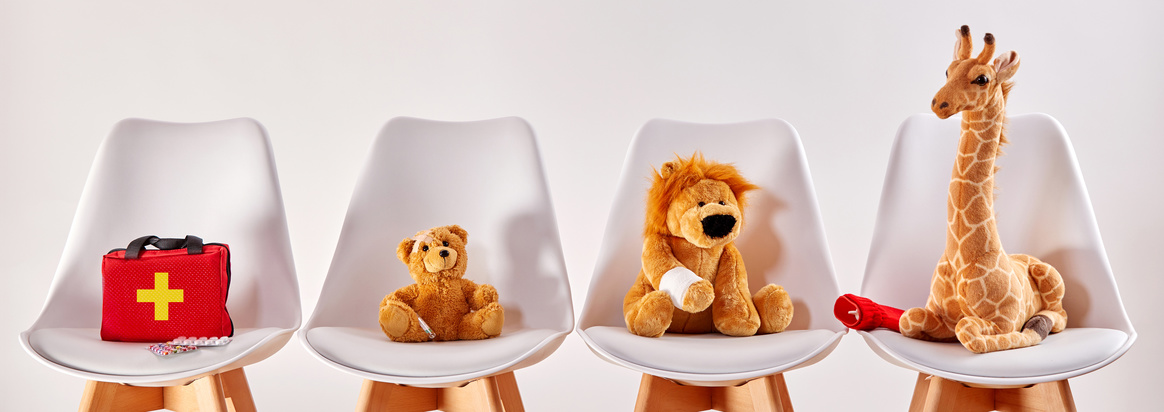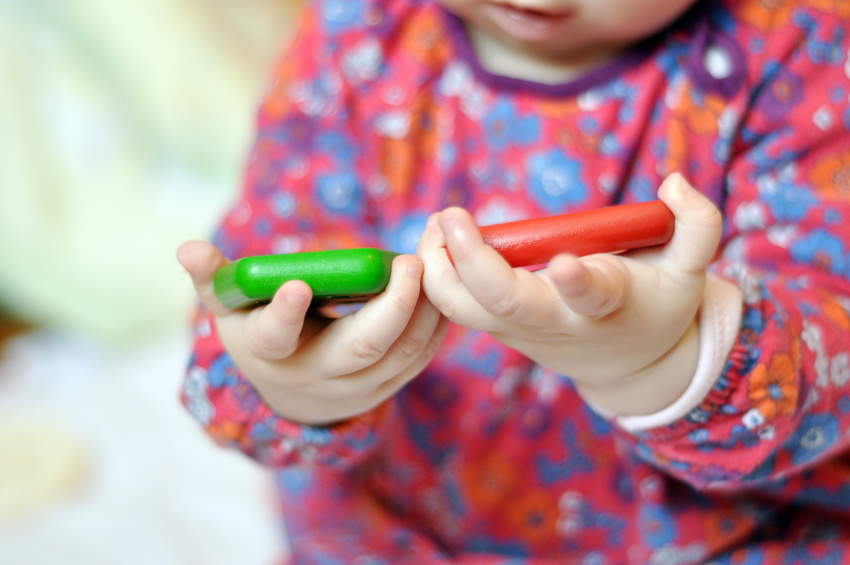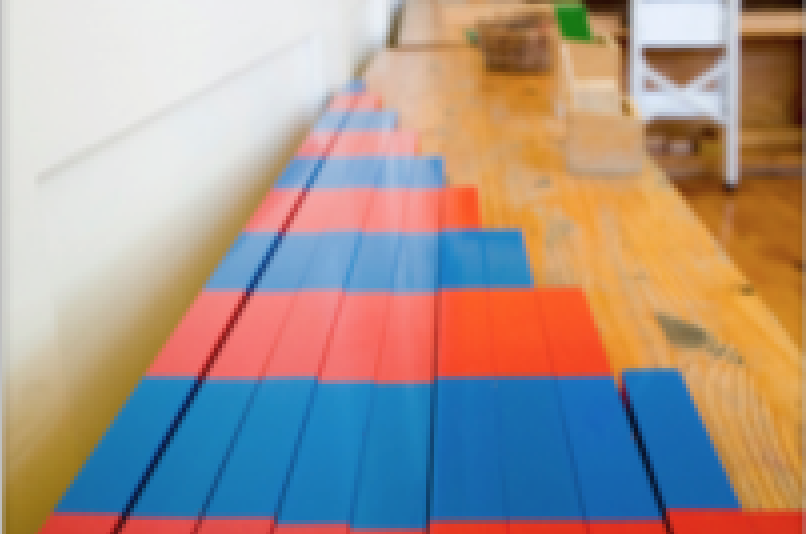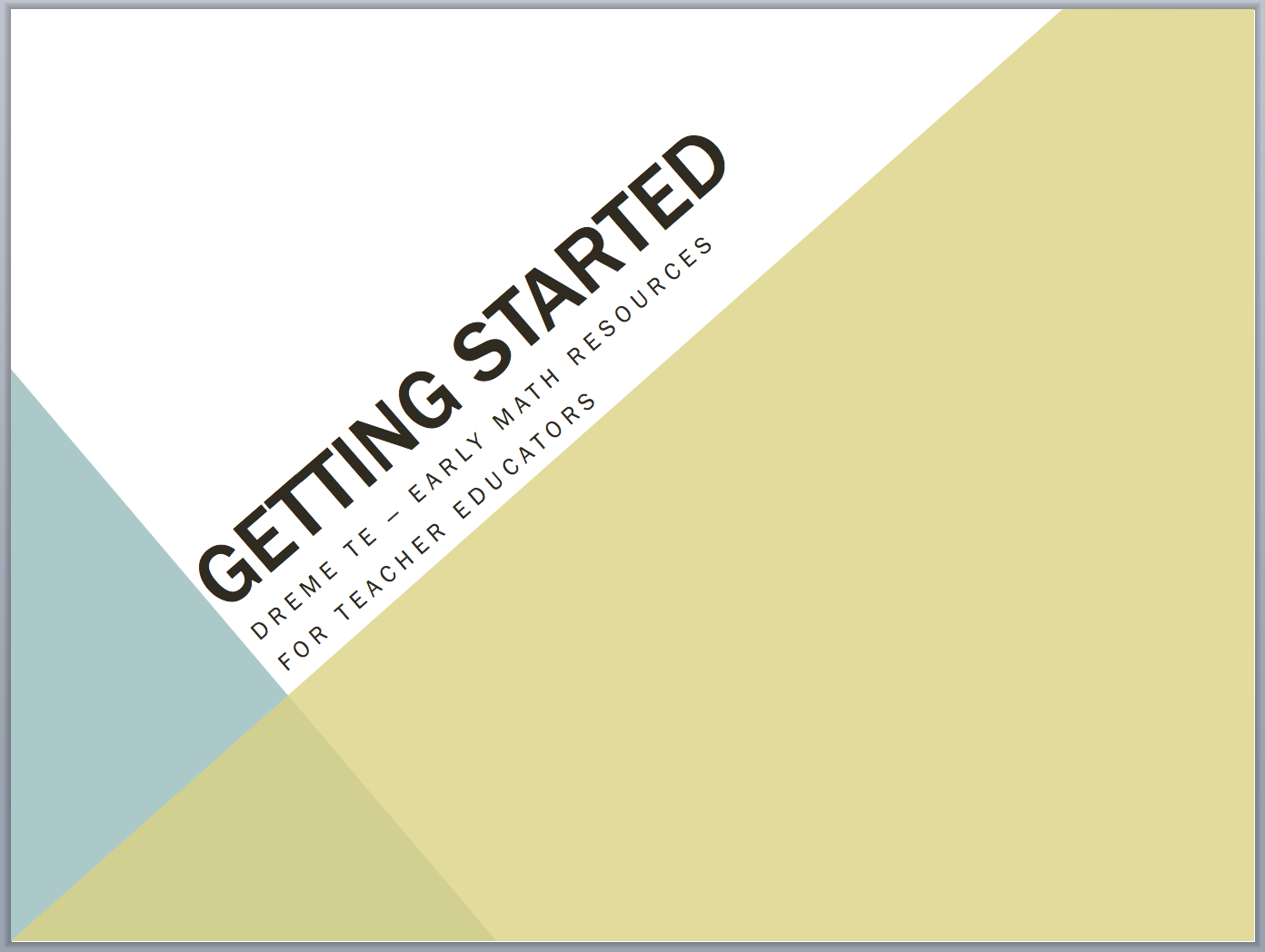The following handout presents an accessible overview of the mathematics of measurement. It provides important information on the foundations of measurement and ideas for supporting development of measurement skills in the preschool classroom.
Engaging in Measurement Activities
How long is the train track? Which block is taller? How much heavier is my pumpkin than yours? How long before lunch? What do all of these questions have in common? Measurement!
Measurement seems like it should be a topic that we can easily wrap our heads around. After all, we ask these kinds of questions all the time in the classroom. And, as noted in Measuring Up, children’s understanding of measurement has foundations in early infancy. By the time they are in preschool, they’ve had lots of experiences with measurement. Children have a particular interest in comparing sizes. They delight in sharing that they are bigger than other children, animals and objects. Dinosaurs can be especially appealing at this age, for no one tells a Tyrannosaurus Rex to take a nap or clean up his toys! But teaching about measurement is harder than it looks.
Teacher's Voice: Supporting DLLs by communicating meaning through movement and gesture
We use hand gestures all the time when we’re singing, or jumping, or talking about measurement. Is it small? Is it big? The movement and gestures help [DLL students] connect what we’re doing with language. -preschool teacher
Gigantic reptiles aside, what are the mathematics of measurement? The sections below discuss some of the key processes and concepts in measurement.
Comparing
We begin with a concept that applies to many forms of measurement, and is the target of several of the questions asked at the beginning of this handout. Children notice differences in length, height, area, capacity, weight, time, and temperature, and can be adept at describing them. Comments like, My road is longer! I’m taller than you! I have a bigger castle than you do! My bucket holds more sand than your bucket! My backpack is heavier than yours! He had a longer turn than I did! And My yogurt is colder than my strawberries! are common in the classroom (some much more common than we’d like!). We can take advantage of this deep interest in comparisons with the question, “How do you know?” This can be the jumping off point to helping children figure out how they can quantitatively describe the comparison. The handout What Children Know and Need to Know about Measurement and Estimation describes a wide variety of ways in which children can compare objects.
Ordering three or more objects
 One step beyond comparing two objects is ordering three or more objects (often referred to as seriation). This requires considering several aspects of a group of objects at once. In a group of three sticks of different lengths, the middle stick is both shorter than the longest and longer than the shortest. Seriation can be difficult for young children to understand. They tend to focus on only one of the comparisons at a time (i.e., whether one stick is shorter than one other). However, with everyday interactions such as ordering stuffed toy bears, cups, or pipe cleaners, children can develop the ability to order objects based on a variety of dimensions, including length, weight, or size.
One step beyond comparing two objects is ordering three or more objects (often referred to as seriation). This requires considering several aspects of a group of objects at once. In a group of three sticks of different lengths, the middle stick is both shorter than the longest and longer than the shortest. Seriation can be difficult for young children to understand. They tend to focus on only one of the comparisons at a time (i.e., whether one stick is shorter than one other). However, with everyday interactions such as ordering stuffed toy bears, cups, or pipe cleaners, children can develop the ability to order objects based on a variety of dimensions, including length, weight, or size.
Origin
When making comparisons, ensuring all elements have a common origin is useful (and sometimes necessary). To conclude that one object is longer than another, one of the objects has to reach beyond both ends of the other object or the end of one object has to reach beyond the other when the two have the same starting place (shared origin). If comparing length or height, measurement is more accurate if the objects are lined up so the ends of the objects begin on the same plane. Rulers are hard to use accurately if they don’t start at zero. An analogy for adults is the use of Celsius and Fahrenheit. Zero means something different in each of these forms of temperature measurement (0˚ is the freezing point in Celsius, but is well below freezing in Fahrenheit), so knowing which kind of thermometer is being used is important when comparing temperatures. The origin counts! But it takes a while for young children to figure this out. They will often focus on only one end of the items being measured when they make length comparisons, failing to notice that the two objects have different starting points.
Non-standard and standard measurement
Preschool educational standards frequently list use of non-standard measurement as skill gained earlier than use of standard measurement. In reality, both of these can be somewhat complicated for young children to understand and use. Non-standard measurement refers to the repeated use of a single object or multiple duplicates of the same sized concrete units end to end to measure length, height, or area. Examples are the use of hands to measure a child’s height, paperclips to measure the length of a tabletop, and square blocks to measure the area of a carpet square. Several issues complicate the use of non-standard measures. One is that the size of the unit used to measure must be consistent (using both large and small paperclips will yield a different measurement than if only large or only small paperclips are used). Another is that the units must be laid end to end or edge to edge, leaving no space between. And, objects should have a common base in order to accurately measure length and height (see origin above). Finally, because objects are rarely exactly twenty paperclips long, conversations about the extra length are needed (e.g., “The table is 20 paperclips long plus about a half a paperclip”). When using objects in non-standard measurement, ease of placement and the ability to line the units up end to end are important aspects to consider (hands may be more difficult to use to measure the length of a table than rectangular pattern blocks).
Standard measures are, well, standardized. They include tape measures, rulers, scales, thermostats, clocks, and so on. Standard measurement tools have some of the same, as well as some additional, complicating issues as non-standard measures. Because they are standardized, the unit size is generally not an issue if the same type of tool is used for measuring the objects (e.g., a tape measure, ruler, yardstick, scale, etc.). However, starting at the origin is essential, for instance measuring an object with a ruler beginning at 0, not 1 (otherwise, some pretty complicated operations are required to compare the objects). Perhaps one of the most complicated issues of standard measurement is that it is tied to number and numerals, and therefore requires children to have gained a considerable amount of number sense in order to understand the corresponding measurements (for example, if a child doesn’t know that 11 is greater than 9, then the use of a ruler won’t help very much in determining which object is longer). And finally, when objects are not represented by whole numbers, the issue of halves, quarters or smaller fractions can be complicated. Like non-standard measurement, stating that one object is “nine inches and a little bit” long and the other is 11 inches, or that one object is “closer to three inches and the other closer to four inches,” can be sufficient to compare. In other words, teachers can scaffold children’s use of standard measurement tools by allowing them to approximate length or height and then compare these approximate measurements.
Attributes in Measurement
The sections you’ve just read concern important concepts that children learn as they engage in measurement activities. Gaining an understanding of these concepts allows children to accurately and meaningfully measure objects and environments by the attributes (dimensions or properties) that they are interested in. These attributes are described below.
Length and Height
Length and height are linear measurements and are perhaps the most commonly measured in preschool activities. They can be measured by both non-standard and standard measurement tools. Children’s understanding of length develops over an extended period of time (well into the elementary school years), and includes (but is not limited to) the concepts of origin and unit (described above), attribute (length has a beginning and an end), and conservation (like number, if nothing is added or taken away, the length does not change regardless of position).
Area
Children informally use area measurement all the time (“You have more room in the sandbox than I do! Look, I don’t have any room for my legs!”) But, area can be more complicated to measure than length because it is two-dimensional (by contrast, height and length are one-dimensional), so children need to pay attention to two attributes at the same time: width and length. In preschool, children can measure area with square tiles placing them end to end and adjacent or they can make use of graph paper. Measuring area with standard measurement tools, such as rulers or tape measures, requires multiplication and is generally explored later in the elementary school years.
Capacity
Water tables, sand boxes, cooking activities, and mealtimes offer rich opportunities for the measurement of capacity: the amount a container can hold. In water and sand tables, both non-standard (dump trucks, teacups, buckets) and standard (measuring cups with or without graduated units) measuring tools are useful and engaging to children. Children explore capacities of cups during mealtime, especially if they are allowed to pour their own beverages. Recipes provide excellent classroom activities that use both number and measurement. This can include non-consumables like play-dough, or hot and cold consumables like smoothies, snacks, and quick breads.
Weight
The measurement of weight is another common preschool classroom activity. Children frequently use their hands to compare the weights of two objects. Balance scales provide non-numerical comparisons of two objects and spring (or digital) scales add number to those comparisons. Children can learn to differentiate weight from size by experimenting with large light objects (such as Styrofoam blocks) and small heavy objects (like metal blocks).
Time
Standard time measurement is a very difficult concept for children to grasp in preschool. Our formal division of time is idiosyncratic and may be confusing to a child (60 seconds in a minute, 60 minutes in an hour, 24 hours in a day, 7 days in a week, 28, 29, 30, or 31 days in a month, 12 months in a year!). A good place to start teaching about time measurement is with the vocabulary of time. Words like morning, afternoon, evening, night, day, tomorrow, yesterday, after, and before can provide a foundation for later time concepts. Children can also take turns making use of hourglasses and timers in the classroom. It is important to use accurate terminology with regard to time. For instance, stating that you’ll be back in a few minutes when you are going on a lunch hour provides an inaccurate statement of time to a child. Although use of the calendar during circle or whole group time is common, its seemingly arbitrary structure makes it less useful than other activities in supporting mathematical development (see "To Calendar or Not To Calendar" Vignette to explore some of the issues that classroom use of the calendar can bring up).
Temperature
As with time, formal measurement of temperature can be difficult for young children to understand. This is particularly true if children live in areas where there isn’t a wide range of temperatures. When it is hot in the summer and snowing in the winter, temperature takes on a bit more meaning!! As with time, introducing temperature words and their meanings as a foundation for later understanding of temperature can be useful. These terms include hot, warm, cool, cold, freezing, and boiling.



